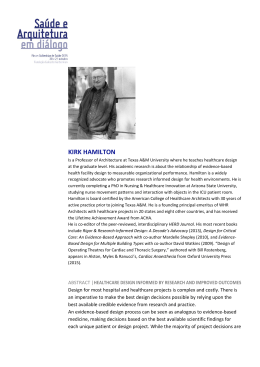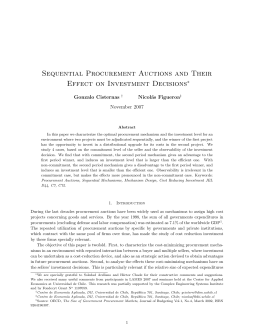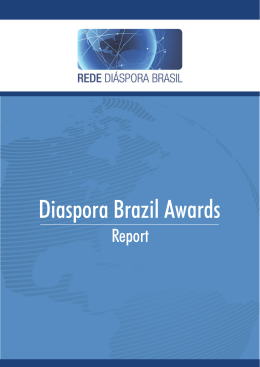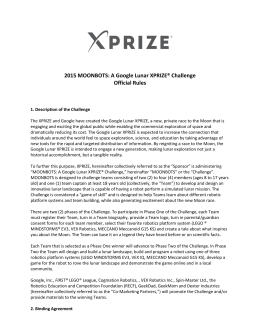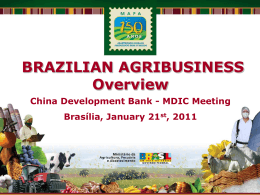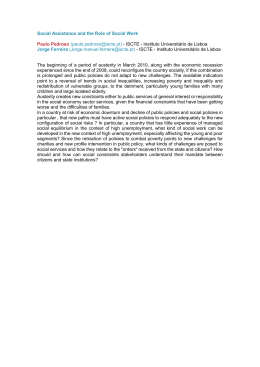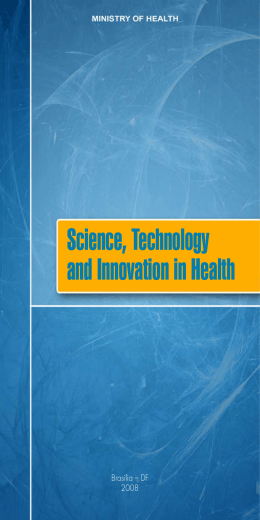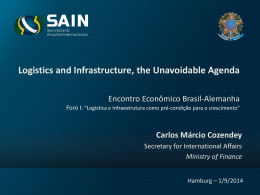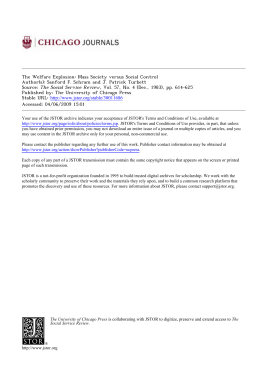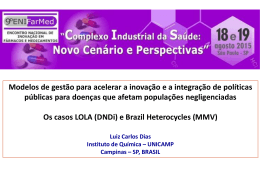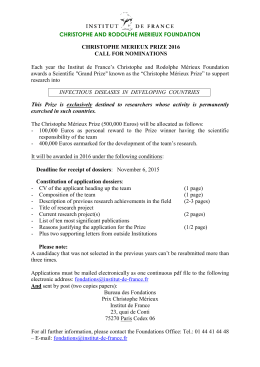2014 UNITED NATIONS PUBLIC SERVICE AWARDS WINNERS The United Nations Public Service Awards (UNPSA) is the most prestigious international recognition of excellence in public service. It rewards the creative achievements and contributions of public service institutions to a more effective and responsive public administration in countries worldwide in four categories. These are Improving Delivery of Public Services, Fostering Participation in Public Policy-making Decisions through Innovative Mechanisms, Promoting Whole-of-Government Approaches in the Information Age and Promoting Gender-responsive Delivery of Public Services. Through an annual competition, the United Nations Public Service Awards Programme promotes the role, professionalism and visibility of public service. It encourages exemplary public service and recognizes that democracy and successful governance are built on a competent civil service. In brief, the Awards aim to discover innovations in governance; reward excellence in the public sector; motivate public servants to further promote innovation; enhance professionalism in the public service; raise the image of public service; enhance trust in government; and collect and disseminate successful practices for possible replication. The UNPSA programme has grown tremendously since its inception. Key statistics of the programme are as follows: • • • • • • • • • 704 nominations have been received for the 2014 cycle, growing from 601 and 470 nominations for 2013 and 2012 respectively. The programme received 81 nominations at its inception in 2003. 80 Member States participated in 2014 Category of Improving the Delivery of Public Services continues to receive the highest number of nominations at 63% of the total number this year The region with the highest nominations this year is Western Asia at 42% of the total, eclipsing the Asia and the Pacific region which had the highest number of nominations for the past five years Other regions: Asia and the Pacific - 34%; Latin America and the Caribbean - 11% Africa - 7%; Europe and North America – 6%; 65% of the total nominations met the programme’s eligibility criteria and were evaluated. 10% of the total eligible nominations were evaluated in the final evaluation by the United Nations Committee of Experts on Public Administration 19 public organizations from 14 countries will be awarded There are no winners for Latin America and the Caribbean for Category 1, Africa, Europe and North America for Category 2, Africa and Europe and North America for Category 3, and Europe and North America for Category 4. Category 1: Improving the Delivery of Public Services Austria Bahrain Cameroon South Africa Spain Singapore Turkey Category 2: Fostering Participation in Public Policy-making Decisions through Innovative Mechanisms Brazil Republic of Korea Thailand Category 3: Promoting Whole-of-Government Approaches in the Information Age Bahrain Brazil India Republic of Korea Uruguay Category 4: Promoting Gender Responsive Delivery of Public Services Brazil Morocco Oman Thailand 2014 Winners - Category 1 IMPROVING THE DELIVERY OF PUBLIC SERVICES Africa 1st Place Winner South Africa Asia and the Pacific 2nd Place Winner Cameroon Europe 1st Place Winner Austria 1st Place Winner Singapore Western Asia 2nd Place Winner Spain 1st Place Winner Turkey 2nd Place Winner Bahrain CATEGORY 1 IMPROVING THE DELIVERY OF PUBLIC SERVICES AFRICA 2014 Category 1 Winner First place South Africa Initiative: Secondary School Improvement Programme (SSIP) Institution: Gauteng Department of Education Many schools in disadvantaged communities in Gauteng suffered from inadequate resources, large enrolment numbers, insufficient and inadequately supported teachers, and poor quality of education. The Gauteng Department of Education was faced with the challenge of breaking the cycle of poor teaching, learning and achievement. A special intervention project named Secondary School Improvement Programme (SSIP) was designed to address the problem of poor learning achievement in key subjects in under-performing schools which were not achieving a minimum pass rate of 75%. The programme focussed on sustainable improvement in the Gauteng’s Grade pass rate and quality of teaching (via supplementary tuition) in 10 identified subjects in priority schools. The implementation of the programme has successfully improved the quality of education in those schools, both in terms of the overall pass rate (of Grade 12) and in terms of the quality of passing grades. In 2009, only 1 priority school achieved a Grade 12 pass rate of over 90% while in 2012 there were 40 priority schools that achieved pass rates of above 90%. The programme has allowed thousands of learners from poverty afflicted communities to achieve levels of success that qualify them to enter higher education and training. 2014 Category 1 Winner Second place Cameroon Initiative: Sustainable Work in the Water Sector and Sanitation Institution: Municipality of Bangangté Bangangté is a community located in the western region of Cameroon, in the department of Ndé. It has 200,000 inhabitants, in which the urban part includes only 10% of the population and the rest lives in remote villages. In 2010 only 15% of the rural population had access to drinking water and proper sanitation, mainly due to the failure of the system of organization and maintenance of rural hydraulic structures. Through the MODEAB project the State helped provide a sustainable solution to the sanitation problem by rehabilitating mini water supply structures to groups of villages; constructing ecological latrines in schools and markets, with recovery of urine for fertilizing; and the establishment of a public water service at the municipal level in each group of villages that received the rehabilitations. The real innovation is the management system. The experience of the partners has led to develop completely a new system based on the operation of three entities that work in synergy with each other to ensure a sustainable and optimal management of infrastructure. By June 2014 the project will already increase the coverage of drinking water needs of 50% in the rural area and it has established a sustainable management system of these infrastructures. The project is based on a territorial approach which involves people at the municipal level to meet the challenge of improving the sustainable use of water services and sanitation. In addition, the project promotes an approach that involves all public and private stakeholders in the definition of a water policy in the area. Socially, it had an impact in civil society engagement considering that issues on the water supply management and actions to be implemented to improve access to drinking water are discussed monthly. 2014 Category 1 Winner Second place Singapore Initiative: Ageing-in-Place Program Institution: Alexandra Health System According to World Bank data, Singapore has the fastest ageing population in Southeast Asia, superseding developed nations such as Australia and the United States. The senior demographic (65+ years) has risen from 7.8% in 2002 to 11.7% in 2013. As people live longer and in an increasingly urban sedentary lifestyle, the growing burden of chronic diseases has translated into greater demand for healthcare and eldercare services. Moreover, the old-age support ratio has fallen from 8.4 (2000) to 5.5 (2013), dramatically increasing the financial burden on the working population. To effectively and sustainably cope with the rise of chronic diseases, this must shift to keeping people healthy in the community while maintaining healthcare costs. The Healthcare 2020 master plan has identified three national challenges: (1) Addressing impact of a growing and ageing population on Singapore’s capacity needs; (2) Changing the way healthcare is delivered to meet the changing needs of its population; and (3) Managing rising healthcare costs. . The initiative, known as the Ageing-In-Place (AIP) programme, is a 2-pronged approach to address the strain of an ageing population with high chronic disease load on the healthcare capacity. The model of care had to shift from a doctor-centric, hospital-based, medical model to a patient-centric community-based health-cum-social model. Shifting mind-set was the first strategic direction for the initiative. Healthcare services had to focus on “what matters to the patient” as opposed to “what is the matter with the patient.” The initiative has improved the delivery of public services with positive impact in the five key areas - patient’s perspective; hospital capacity; hospital service delivery and process re-engineering; business analytics; and design thinking/research. The Community Nurses (CNs) became the patients’ single point of contact for care access and navigation of available assistance schemes and services. Care model went beyond diagnoses, pills and procedures in the hospitals to building trusting relationships between healthcare workers and patients in their homes. EUROPE AND NORTH AMERICA 2014 Category 1 Winner First place Austria Initiative: Open Government Data-Data.gv.at Institution: Federal Chancellery of the Republic of Austria The Cooperation Open Government Data Austria (in short: Cooperation OGD Austria) initiative was designed by federal representatives, provinces, cities and municipalities to improve access to data and leverage its use by multiple partners. The Austrian open government data strategy includes a central open meta-data portal to increase transparency and accountability of services of all involved in public bodies. The core of the initiative is the focus on ensuring that the system is user friendly and can be navigated by people with limited knowledge of technology. The initiative provides a number of advantages such as higher efficiency and availability of the data sets on the official Open Government Data platform (OGD) (instead of responding to demands for data). Given the common data basis, OGD allows for the comparison of data as well as an understanding of content and structure. Transparent processes and greater citizen control may be able to hinder corruption and the irresponsible use of public money, increasing the power of intermediates and would thus lead to an increased democratized process. OGD had a positive effect on the public image, where the public image is related to higher conformability, government activities, higher transparency, better quality, efficiency and effectiveness. 18 out of 27 externals stakeholder survey participants perceive OGD as beneficial for their work activities, especially scientists and researchers. 2014 Category 1 Winner Second place Spain Initiative: Data Intermediation Platform Institution: Ministry of Finance and Public Administration In many administrative procedures, public administration in Spain requested the citizens papers, documents, certificates or data already held by the administration itself, causing loss of time, unnecessary travel and widespread discontent among citizens. The solution proposed by the Spanish government was making it possible to allow the electronic and online validation of data that are required from citizens, exempting the latter from having to provide such data. That made it possible the availability of a data intermediary platform, easy to install, which allows an authorized officer to consult the citizen data required in the administrative procedures; the rationalization of electronic communications in the administration; the increase of data quality and especially the possibility of minimizing errors and/or forgery; and the economy of money, since no paper or displacements are necessary for electronic transactions. WESTERN ASIA 2014 Category 1 Winner First place Turkey Initiative: Centre of Children Working in Ankara Streets Institution: Ankara Metropolitan Municipality “Centre of Children Working in Ankara Streets” was initiated in 1993 with a protocol signed on 4 December 1992 following the launch of the International Programme on Elimination of Child Labour (ILO-IPEC) in Turkey in 1992. Although ILO stopped its support to the program in 1997, since the problem was not solved completely, Ankara Metropolitan Municipality renewed the Centre for Children Working in Ankara Streets and continued its services after 1997. Taking into consideration all dangers and disadvantages that the children working in the streets could face, “Centre of Children Working in Ankara Streets” was founded in a region close to streets where children generally worked in, which became an important research centre for the understanding of the problem. Following a detailed problem analysis, it is established that the solution could not be achieved only with precautions and banning and that at the roots of the problem lied factors arising from urban poverty caused by internal immigration. Consequently, it was understood that cooperation of family, school and the Centre for Children Working in Streets was necessary while tackling this issue. The Centre was able to implement preventative measures through meetings held with the families while it continued its activities with a team of specialists in order to make up for the shortages in these disadvantaged areas by providing social, cultural, psychological, sports, educational, health and food services. As a result of the work carried out, children working in the streets who received help and support from the centre were able to complete their high school education particularly in Arts, Sports and Vocational High Schools and even universities. These activities prevent crimes before they are committed, and make the poor stronger. A better future for children can be built as well as a more liveable society for all. 2014 Category 1 Winner Second place Bahrain Initiative: National Health Information System (I-SEHA) Institution: Ministry of Health I-SEHA initiative is a key component of enacting the Ministry’s vision to improve healthcare services. Bahrain’s healthcare system has 26 health centres, two main hospitals and four peripheral hospitals serviced by over 4,000 health professionals. Although the country had made significant strides in e-government and provision of e-services, its health information systems were not managed optimally and there was barely any clinical management through electronic services. This resulted in administrative inefficiency, with health care management largely based on manual and paper-based systems. There was always a potential risk of losing requests and patient files, which could hamper the quality of health care for patients who needed prolonged treatment. I-SEHA provides a modern, intelligent and integrated informed healthcare system which allows all the health care information to be stored in a paperless manner with the support of a secured database. The system (I-SEHA) provides information accurately into the hands of people, and helps doctors to coordinate care and protect safety. Since all providers can share health information through this system, patients have access to more accurate and up-to-date information. As I-SEHA is a country-wide platform available at all healthcare providers, a patient can instantly be referred to a specialist in another facility with all his information intact and accessible on real time. Around 3.500 people are being referred electronically per month. I-SEHA reduces unnecessary tests and procedures, reducing risks and cost of money. All health centres have access to all test results and records at once, reducing unnecessary repeated tests. Regular reports on key indicators are generated (length of stay, bed occupancy, and number of inpatients, etc.) and the system can also monitor the performance of an area or physician considering the number of patients attended prescriptions, referrals, requests etc. From a policy perspective, the system has been successful in generating information that is useful for decision making processes and policy reviews that are necessary to improve provision of health care in Bahrain. 2014 Winners - Category 2 FOSTERING PARTICIPATION IN POLICY MAKING DECISIONS THROUGH INNOVATIVE MECHANISMS Asia and the Pacific 1st Place Winner Thailand Latin America and the Caribbean 2nd Place Winner Republic of Korea 1st Place Winner Brazil CATEGORY 2 FOSTERING PARTICIPATION IN POLICY MAKING DECISIONS THROUGH INNOVATIVE MECHANISMS ASIA AND THE PACIFIC 2014 Category 2 Winner First place Thailand Initiative: Integrating Network and Community Participation for Effective Malaria Management in Tha Song Yang Di Institution: Department of Disease Control, Ministry of Public Health The Integrating Network and Community Participation for Effective Malaria Management in Tha Song Yang Di initiative was initiated for malaria care. Malaria is a global health concern involving morbidity and mortality. It is particularly prevalent in large parts of Africa and Asia. In 2010, according to the World Health Organization, there were 216 million cases of malaria and 655,000 deaths worldwide. Approximately 86 percent were children. From 2008 to 2010, there were approximately 73,000 reported cases of malaria in Thailand, of which 90 percent occurred along the international borders of the Mekong region. In this region, the incidence rate of malaria in Tak Province was 2-3 times higher than the rest of Thailand. The initiative’s objectives were to increase participative policy making amongst stakeholders in order to create a proactive malaria care plan, as well as coordinate collaboration to utilize the resources available and harness the efforts from all parties involved. The results of the initiative were a reduction in deaths from malaria. People were satisfied with the integrated proactive service delivery for malaria control in the high-risk areas with the higher satisfaction rate. Overall, time and cost savings such as transportation cost, material cost and medication cost and also waiting time and travelling time. 2014 Category 2 Winner Second place Republic of Korea Initiative: Building the Best Neighborhood Project Institution: Changwon City The initiative “Building the Best Neighbourhood Project”, sought to better include and encourage involvement of local citizens, which had an active participation from planning to implementation with the goal of an improved quality of life for the citizens themselves. It was designed and implemented to solve the problem of excessive local development as part of the Korean government’s major economic growth expansion project at Changwon City. Reckless care about the environment generated many problems to the city (pollution of the air and high level of greenhouse gas emissions are common problems). Factories and orchards located between the Nakdong River and surrounding agricultural areas spewed pollutants into local rivers and streams, contaminating local water sources. Residential areas were turning into typical “bedroom towns” places where people only stay, but do not participate or engage in the local community. This initiative resulted in the planting of 3.88 million trees, made possible thanks to active citizen participation. The effort helped reduce air pollution, as well as urban noise and it also decreased the average summer temperature by about 3 to 7 degrees Celsius and reduced over 21,261 tons of carbon dioxide. The water quality levels increased from a Level 3 to a Level 1. The city transformed its image from cold and industrial to a bright and enjoyable city full of culture and tradition and these changes brought a needed sense of vitality, life, history, and personality to the town. It was the first citizen-led local government project in South Korea - City government roles are very insular and dominant in South Korea, leaving citizens with limited resources to tackle local problems. This led to a culture of passivity among local residents in solving local problems. The goal of this project was to reverse these norms, providing citizens an active role in government. - In this project the city supported the neighbourhood with financial resources and helped the community form a project implementation committee. LATIN AMERICA AND THE CARIBBEAN 2014 Category 2 Winner First place Brazil Initiative: Inter-council Forum Institution: Ministry of Planning, Budgeting and Management and Secretariat-General of the Presidency of the Republic of Brazil The initiative of the Inter Council Forum (FI) was entirely designed by the teams of public servants from MPOG and SGPR. Initially, it was necessary to review the initiatives previously developed to address the challenge of participative planning and budgeting in federal level. Main sources of data came from the PPA 2004-2007 and PPA 2008-2011, both showing some level of public consultation in its preparation, and the recommendations of an interrupted workgroup assembled in 2007 (Presidential Decree of March 1st) to propose some guidelines to foster social participation on the matter. This resulted in a proposal of a “second-level” participatory structure that would consider all the large spectrum of collegiate organs already existing in the government. The proposed structure was therefore called “Fórum Interconselhos” or Intercouncil Forum (FI), due to fact that it relied primarily upon the national councils’ collaboration. This initiative is about the building of a direct channel of dialogue and influence over decisions, regarding public planning and budgeting in federal level. Its main objective is to empower citizens, by existing participatory structures as national councils, to monitor and participate in decision-making processes about planning and budgeting of public policies as a whole. There are two major intended audiences targeted by this strategy: (a) more directly, the representatives of social organizations and movements (non-governmental ones) that already take part in a national council and could be appointed to compose the FI; (b) indirectly, citizens in general, who could take part of the open-access channels developed (public hearings and internet groups) or would be involved in similar activities replicated by the councils. The adhesion to the process was an indication of increased credibility. 2014 Winners - Category 3 PROMOTING WHOLE-OF-GOVERNMENT APPROACHES IN THE INFORMATION AGE Asia and the Pacific 1st Place Winner Republic of Korea Western Asia 1st Place Winner Bahrain Latin America and the Caribbean 2nd Place Winner India 1st Place Winner Uruguay 2nd Place Winner Brazil CATEGORY 3 PROMOTING WHOLE-OF-GOVERNMENT APPROACHES IN THE INFORMATION AGE ASIA AND THE PACIFIC 2014 Category 3 Winner First place Republic of Korea Initiative: Social Security Information System (SSIS) Institution: Korea Health and Welfare Information Service (KHWIS) The Social Security Information System (SSIS) was first proposed and pursued in 2008 as a solution to management of welfare services in the country. The Korean government built the Social Security Information System step-by-step from 2009 to 2013. It was designed to comprehensively manage information on qualification, as well as records of 14 million welfare recipients. These records provide the basis for making payments from 292 systems in 17 ministries. At the initial stage, the system was built to manage information on recipients’ qualifications and records of welfare payments and services led by the Ministry of Health and Welfare. At the second stage, key features were applied in the 17 ministries related to welfare in the following order: (a) The business process was reengineered (BPR) around welfare payments and services directed by the Ministry of Health and Welfare. Once “an investigation into the application, income, and assets” was conducted as a key and common process for the provision of welfare, a comprehensive delivery process was newly prepared for the investigation’s adoption for diverse welfare payments and services. This process was to minimize the citizens’ inconvenience in having to apply separately for diverse welfare payments. (b) Measures were prepared to connect information and solve the inefficient administrative process. (c) The measures allowed for the searching of records of past receipts of diverse welfare payments and services, thus preventing duplicate receipt. For this, a database organized by past welfare payment and service was changed to one that included individuals and households. (d) An information system was built for pan-governmental use. Ministries that used different and separate information systems to provide and manage welfare services could now use the features and information of the Social Security Information System (SSIS) for application submission, materials on income and assets, as well as receipt of qualifications and records. 2014 Category 3 Winner Second place India Initiative: Mobile Seva Institution: Department of Electronics and Information Technology Mobile Seva is a unique nationwide whole-of-government initiative conceptualized, owned, funded and implemented by the Department of Electronics and Information Technology (DeitY), Government of India, in 2011 for enabling delivery of public services electronically through the mobile platform. A policy framework for mobile governance was notified in February 2012 and a centralized cloud-based platform—Mobile Services Delivery Gateway (MSDG)—has been created that any government department or agency in the country can expeditiously onboard without having to create its own infrastructure. The vision is to mainstream mobile governance in the country as a compelling new paradigm for e-delivery of public services through mobile devices. It leverages the massive penetration of mobile phones in India to substantially enhance access to electronic services, especially in the rural areas. It particularly benefits the poor, illiterate, disabled, elderly, and the women in accessing e-governance services as access to mobile phones is much higher in these segments of the population as compared to access to the Internet. The main objectives are: (a) A one-stop solution for all mobile-based public service delivery needs through all mobile-based channels, including SMS, voice/ Integrated Voice Response System (IVRS), Unstructured Supplementary Service Data (USSD), and mobile applications. (b) A central cloud-based platform for departments to expeditiously start service delivery through mobiles without the need to create their own infrastructure. (c) A platform based on open standards and open source that enables seamless integration and interoperability with common and existing e-governance infrastructure in the country. The positive impacts of the initiative are significant savings in time, effort and cost, since the Mobile Seva platform is centrally hosted and cloud based, departments need not invest any resources in creating their own infrastructure. LATIN AMERICA AND THE CARIBBEAN 2014 Category 3 Winner First place Uruguay Initiative: Uruguay Competes Institution: National Civil Service Bureau Citizenship did not have clear, comprehensive and accessible information on recruitment and selection for the employment of workers into the Civil Service. The jobs offered to public servants were published in multiple web sites and print media. However, the management did not have standardized procedures on recruitment and human resource management. The solution was to implement a centralized management and recruitment process with transparent and democratic selection. A website (www.uruguayconcursa.gub.uy) was created to allow citizens to: (a) consult public vacancies free of charge; (b) sign up; (c) submit their professional and educational profile; (d) apply and check the status of their applications; (e) receive daily announcements of new job offers and news about them in a personalized way; (f) receive calls after consulting vacancies; and (g) access all documents of their application. With these tools the project reaches the entire population in working conditions and complements the social policy development that aims to bring employment opportunities to the most vulnerable populations and groups. The State offers all on one site and provides transparency to the systems of recruitment. Civil society has reacted in a very participatory way. There were: 158,371 of registered users in portal; 154,000 average monthly visits to the Portal; 416,693 applications to the offers; 6,400 selected personnel through the system; and 30,000 consultations to the Call Centre. 2014 Category 3 Winner Second place Brazil Initiative: Transparency and Citizens' Access to Information Institution: Rio Grande do Sul State Government The Rio Grande do Sul State Government has implemented a program whose strategy in terms of transparency is to put the citizen at the center of government. The new strategy is based on three principles of open government, namely: participation, transparency and collaboration. This has allowed significantly how to publish data and information and to provide the public accounts; implement innovative mechanisms for data visualization that allows going beyond the georeferenced location of government actions, the graphical view of the decisions and outcomes of government action. It is a centralized and horizontal coordination of public policies on ethics, public control and transparency in a single body, linked to the governor, together with the successful experience of the implementation of the Law on Access to Information in a short period. The joint planning and cross-sector articulation were critical to the success of the program. More than 2,000 research demands in different areas of government were generated, since the publication of access to public information service. Over 2,000 applications have been met by the government, as well as the demands of society relate to various functions of government, especially public safety, health and education. The government also has a legal limit for compliance, and progress can be accompanied online by the citizen. Moreover, the demand generates feedback for new possibilities of publication of public information, and an increase in access to the Portal in 30% was noticed after the design of the Central Portal Citizen due to new channels of interaction, ease of access and centralization, in a government single format. WESTERN ASIA 2014 Category 3 Winner First place Bahrain Initiative: The National Contact Centre Institution: eGovernment Authority The National Contact Centre (NCC) was created to respond to the challenge of unifying the many government call centers into a single solution. E-Government Authority (eGA), with support from the highest levels of government, initiated a study to understand the scope of the challenge and generate potential solutions. The study examined the situation across the different government call centers and analyzed the market to identify best of breed solutions. The study concluded that, due to the immature market for call center services within Bahrain, the best solution would be to build a definitive new center to unite telephone enquiries for the different agencies providing services. Partnership with a world-leading specialist was seen as critical to deliver a truly transformational call center capable of providing consistently outstanding service to the people of Bahrain. The NCC model achieved many goals even in its early life stages. The NCC successfully planted the concept of a unified contact number for the Government of Bahrain in the minds of a large segment of society. In fact many queries received are related to organizations that are not directly supported by the center but can still be handled effectively by the highly trained staff. Beyond the superior service experienced by citizens, eGA has built a market-leading exemplar call center solution for a country that previously lacked a strong service provider. Public-Private Partnerships can deliver successful, profitable services by striking the correct balance between the drivers of government to improve service quality and efficiency along with the drivers of a business entity to be efficient and profitable. The distinctive idea of government-private sector partnership succeeded in becoming a sustainable, standalone business process outsourcer that delivers the best quality of services in the most efficient manner. 2014 Winners - Category 4 PROMOTING GENDER RESPONSIVE DELIVERY OF PUBLIC SERVICES Africa 1st Place Winner Morocco Latin America and the Caribbean 1st Place Winner Brazil Asia and the Pacific 1st Place Winner Thailand Western Asia 1st Place Winner Oman CATEGORY 4 PROMOTING GENDER RESPONSIVE DELIVERY OF PUBLIC SERVICES AFRICA 2014 Category 4 Winner First place Morocco Initiative: Gender Responsive Budgeting in Morocco Institution: Ministry of Economy and Finance Gender mainstreaming was not institutionalized and was not systematic in Morocco. The country had made international commitments in terms of promoting equality and equity between women and men. At the same time, these commitments were not reflected in national priorities, particularly with respect to allocation of resources, and there was a need for legal and policy reforms to facilitate mainstreaming of gender issues. The Fiscal reform was launched in 2002 to integrate gender equality and mainstream gender into the ministerial departments’ budgets. This led to the development and implementation of the Gender Responsive Budgeting in Morocco, (BSG- Morocco) which was made possible through a partnership between the Ministry of Economy and Finance (MEF) and UN Women. The key objectives of the initiative were to align policies, strategies, programs and budgets on compliance with commitments to equality and gender equity, with the ultimate goals of reducing poverty and exclusion of women. A survey on the situation of women in MEF was launched. It raised the issue of the place of women in the Ministry and has introduced a change in the governance through the implementation of invitations to apply for access to positions of responsibility. This new device has shown the potential of female expertise available to the Department. To operationalize the membership departments to Gender Budgeting, a feasibility study of the budgetary accounts of gender and children was conducted in 2002 with MEF support of the World Bank and to test the feasibility of the approach for the case of Morocco. The process culminated into the involvement of other government ministries and concerted efforts were made to collaborate in order to realise the gender budgeting across government agencies. An annual gender report is mandatory since 2005, and is a tool for assessing compliance to gender budgeting. This initiative has succeeded in institutionalizing gender based planning and budgeting which is likely to have a lasting impact on the allocation of resources to the gender sensitive delivery of public services. Over 30 Departments adhere to this initiative, representing 80% of the total budget of the Government. ASIA AND THE PACIFIC 2014 Category 4 Winner First place Thailand Initiative: One Stop Crisis Centre Institution: Khon Kaen Hospital The initiative One Stop Crisis Centre (OSCC) was implemented at Khon Kaen Hospital, the first hospital in Thailand to develop a service centre dedicated to support women and girls who experience violence. The centre is supported by gender experts. It is operated by a multidisciplinary team of medical personnel, nurses, social workers and other multidisciplinary networks outside the hospital. The centre functions as a separate unit specially designed for women and girls who experience violence or have unwanted pregnancies. The work of Khon Kaen Hospital’s OSCC includes multiple levels of cooperation. At the hospital level, the centre has its own multidisciplinary team who act as case managers and seek support from networks in both the government and private sectors e.g. police, prosecutors, Ministry of Social Development and Human Security officials and public health personnel. The most important networks which help women access the service faster are the public health network and the community network. As a result of 14 years’ worth of work, the OSCC of Khon Kaen Hospital has become an example of best practice for other hospitals in Thailand. Women and girls now receive prompt and sensitive treatment and are supported mentally and legally by the work of the multidisciplinary support team. Service providers’ attitudes have been changed and they now deliver services with sensitivity, focusing on the needs of the girls and women without judging or imposing social values on them. LATIN AMERICA AND THE CARIBBEAN 2014 Category 4 Winner First place Brazil Initiative: Mae Coruja Program Institution: State Health Secretariat of Pernambuco The Pernambuco’s “Mãe Coruja” Program, created in October 2007, is a public policy of comprehensive care to women and children, which, through integrated articulation of the Health, Education and Social Development sectors, has, as its main aim, the reduction of indicators of infant and mother mortality rates in the state, besides the improvement of associated social indicators. The target population of the program is pregnant women residing in the state, from the confirmation of pregnancy, and their children up to five years of age. 26 municipalities in the arid regions of the state were selected to initiate the program. The next goal was set at reaching 50% of the State’s cities with a mortality rate higher than 25 deaths for every thousand children born alive. The positive impact of the initiative was reduction of infant mortality by 37.98% in the 103 municipalities where the Program operates, with the consequent drop of 45% in the State indicator. Significant reduction was also observed in the mortality rates of mothers after the implementation of the Program, with a drop of 14% in this State indicator. Currently, 100% of the municipalities assisted by the Program have coverage of ambulances of the Urgency Mobile Assistance Service. The program also addressed the citizenship issue and facilitated women’s access to formal education. The impact cites over 16,000 women entering the job market upon getting these qualifications. WESTERN ASIA 2014 Category 4 Winner First place Oman Initiative: Omani Nurse-Midwife Institution: Ministry of Health A national strategy was formalised to Omanise the nursing and healthcare providers in Oman, including the nursesmidwifes professions. A pilot run of midwifery course was conducted for eight Omani nurses. The pilot run was analysed and evaluated which became the basis of future implementation of the whole project. 1999– Official launch of the midwifery course in Oman Institute of Health (later renamed as Oman Nursing Institution). 2001 – setting up of Omani Nursing and Midwifery Council (ONMC) as a critical body for setting standards for high-quality nursing and maternity care. The country now has a steady stream of graduates who specialise in midwifery. Reduction in maternal and infant mortality rate has been realised, with the maternal mortality rate in childbirth from 27.3 (per 100,000 live births) in 1991 to 15.9 in 2011, a reduction of more than 205% and Infant Mortality Rate of 29 (per 1000 live births) in 1990 to 9.5 in 2011, about more than 71% reduction. There is a reduction in home deliveries-, from 20% home deliveries in 2006, to almost 99% deliveries done in hospitals by end of 2012. Omani nursesmidwifes are able to communicate easily to their nation women and involve them their care. This empowers women’s right to be in decision making process of the care provided. Ministry of Health (MOH) expanded to cover major governorates of Oman, increasing nurses from 18 in 1999, 56 in 2012. Today, there are about 619 Omani autonomous midwife practitioners in sultanate.
Download
